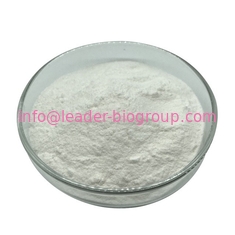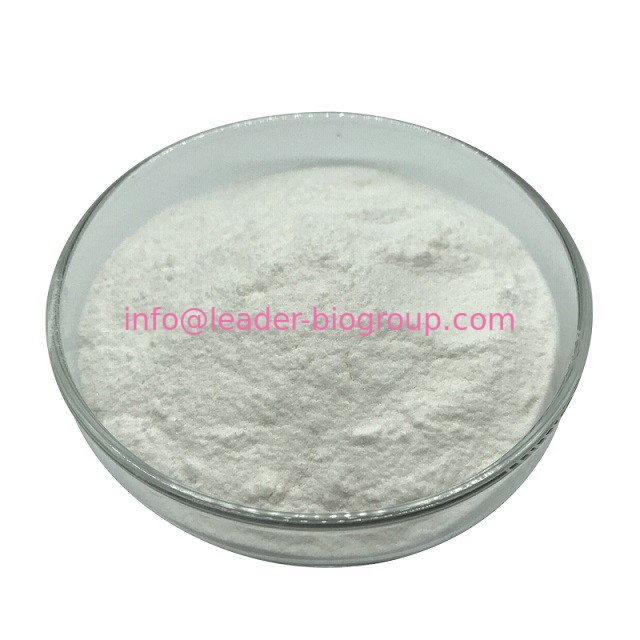| Bekanamycin Basic information |
| Product Name: |
Bekanamycin |
| Synonyms: |
d-streptamine,o-3-amino-3-deoxy-alpha-d-glucopyranosyl-(1-4)-o-(2,6-diamino-2,;kanendomycin;kdm;nebramycinfactor5;nebramycinv;(2R,3S,4R,5R,6R)-5-Amino-2-(aminomethyl)-6-[(1R,2S,3S,4R,6S)-4,6-diamino-3-[(2S,3R,4S,5S,6R)-4-amino-3,5-dihydroxy-6-(hydroxymethyl)oxan-2-yl]oxy-2-hydroxycyclohexyl]oxyoxane-3,4-diol;Bekanamycin;NK 1006 |
| CAS: |
4696-76-8 |
| MF: |
C18H37N5O10 |
| MW: |
483.51 |
| EINECS: |
225-170-5 |
| Product Categories: |
Inhibitors;Pharmaceutical Intermediates;API |
| Mol File: |
4696-76-8.mol |
 |
| |
| Bekanamycin Chemical Properties |
| Melting point |
178-182° (dec) |
| alpha |
D18 +130° (c = 0.5 in water); D21 +114° (c = 0.98 in water) |
| Boiling point |
580.49°C (rough estimate) |
| density |
1.3771 (rough estimate) |
| refractive index |
1.7600 (estimate) |
| pka |
13.07±0.70(Predicted) |
| color |
Crystals |
| Toxicity |
LD50 i.v. in mice: 136 mg/kg (Wakazawa) |
| |
| Bekanamycin Usage And Synthesis |
| Originator |
Kanendomycin,Meiji Seika,Japan,1969 |
| Manufacturing Process |
200 liters of the medium containing 2.0% starch, 1.0% soybean meal, 0.05% KCl, 0.05% MgSO4·7H2O, 0.3% NaCl, 0.2% NaNO3 was placed in the 400 liter fermenter, the pH was adjusted to 7.5, and the medium was then sterilized (pH after the sterilization was 7.0) for 30 minutes at 120°C, inoculated with 1,000 ml of 40 hour shake-cultured broth of S. kanamyceticus (a selected subculture of K2-J strain) and tank-cultured at 27°-29°C. As antifoam,soybean oil (0.04%)and silicone (0.04%) were added. The broth after 48 hours was found to contain 250 mcg/ml of kanamycin.
A portion (950 ml) of the rich eluate was adjusted to pH 6.0 by the addition of sulfuric acid. Ultrawet K (7.0 g) in 70 ml water was added slowly to the neutralized eluate to precipitate kanamycin B dodecylbenzenesulfonate which was collected by filtration after adding filter aid (Dicalite). The cake was washed with water and extracted with 100 ml methanol. After filtering and washing with methanol, sulfuric acid was added to the filtrate until no more kanamycin B sulfate precipitated. After addition of an equal volume of to provide more complete precipitation, the kanamycin B sulfate was collected by filtration, washed with methanol and dried in vacuo at 50°C. |
| Therapeutic Function |
D-Streptamine, O-3-amino-3-deoxy-α-D-glucopyranosyl-(1- 6)-O-[2,6-diamino-2,6-dideoxy-α-D-glucopyranosyl-(1-4)]-2-deoxy sulfate (1:1) |
| Antimicrobial activity |
A component of the mixture of kanamycins produced by Streptomyces kanamyceticus. It is approximately twice as active as kanamycin A and is twice as toxic. It is not active against amikacin-resistant strains of MRSA. It is poorly active against Ps. aeruginosa.
The pharmacokinetics and uses are similar to those of kanamycin. A 0.5% ophthalmic solution has been used to treat gonococcal ophthalmia neonatorum. It is available in Japan. |
| Safety Profile |
Poison by intravenous route.Moderately toxic by intraperitoneal and subcutaneousroutes. When heated to decomposition it emits toxicfumes of NOx. |
| Purification Methods |
A small quantity of kanamycin B (24mg) can be purified on a small Dowex-1 x 2 column (6 x 50mm); the required fraction is evaporated to dryness and the residue crystallised from EtOH containing a small amount of H2O. [Umezawa et al. Bull Chem Soc Jpn 42 537 1969.] It has been crystallised from H2O by dissolving ~1g in H2O (3mL), adding Me2NCHO (3mL) and setting aside at 4o overnight. The needles are collected and dried to constant weight at 130o. It has also been recrystallised from aqueous EtOH. It is slightly soluble in CHCl3 and isoPrOH. [IR: Wakazawa et al. J Antibiot 14A 180, 187 1961, Ito et al. J Antibiot 17 A 189 1964, Beilstein 18 III/IV 7631.] |
| |
| Bekanamycin Preparation Products And Raw materials |
|

